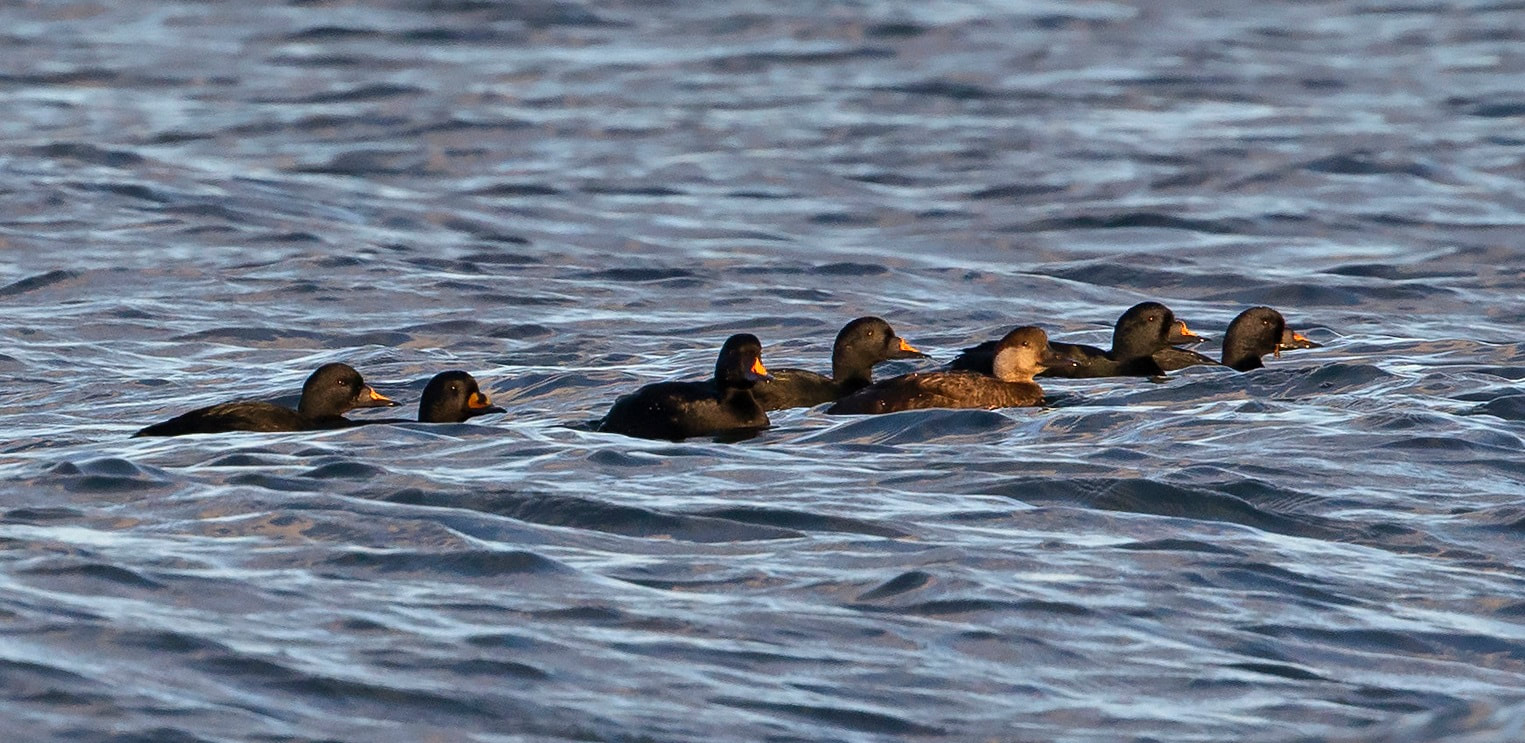|
The leak of around 80,000 litres of oil into the Irish Sea last week highlights the importance of Liverpool Bay for wintering waterbirds. Monitoring of the spill, and its effect on wildlife, from an undersea pipeline approximately 20 miles north of Rhyl was hampered by the series of storms since last Wednesday. Photos shared on social media at the weekend reported oiled Oystercatchers and showed an oiled Herring Gull at Seaforth, north of Liverpool. Oil had been predicted to move east onto the Lancashire coast.
Liverpool Bay is designated as a Special Protection Area for Red-throated Divers and Common Scoters. The birds move around the Bay through the winter, so it’s unclear how many could be affected by the leak. Aerial surveys in 2015-20 found up to 290,000 Common Scoter ducks wintering in the area, which is more than double the previous population estimate for the whole of Britain. Some of these birds will soon depart over the Pennines and across the North Sea, heading for their breeding grounds in Scandinavia and Russia. It was the waterbird most greatly affected by the Sea Empress tanker spill in Pembrokeshire, 26 years previously to the very day. The weekend storms pushed other seabirds into coastal waters, including Little Gulls off Criccieth. An Iceland Gull was off Porthmadog Cob, with a second joining one overwintering on the Little Orme. Dozens of Kittiwakes and a number of auks including Black Guillemots made their way back out to sea via the Menai Strait on Monday. Greenshank and Golden Plovers sheltered from Storm Franklin on Rhyl’s half-drained Marine Lake, while long-stayers included a Cattle Egret near Valley, Long-tailed Duck in Foryd Bay and a trio of Greenland White-fronted Geese in the Glaslyn valley. Scaup remain at Rhyl’s Brickpits Pool and RSPB Conwy, with a Spotted Redshank at the latter. A Water Pipit is at Brynsiencyn, three Slavonian Grebes on the Inland Sea and a Hen Harrier on the Artro estuary.
0 Comments
Leave a Reply. |
Bird notesA weekly update of bird sightings and news from North Wales, published in The Daily Post every Thursday. Archives
July 2024
Categories |

 RSS Feed
RSS Feed
